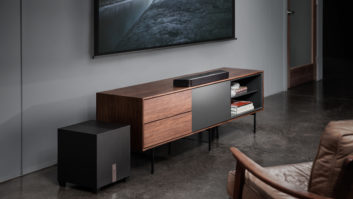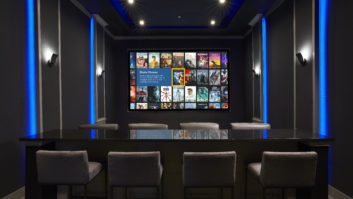“A war chest is a collection of funds intended to allow a person or organization to get through a situation that requires much more money than usual.” Wikipedia
I’m not a financial analyst, so please cut me a bit of slack if my figures are off due to faulty research, but by my Googling—and the irony of using Google to look up Apple is kind of delicious—I find that Apple’s war chest has cash reserves somewhere in the $150-billion range. Tim Cook recently announced an increase in the company’s share buyback program to $130 billion and also approved an eight-percent increase in the company’s quarterly cash dividend, so I’m sure that cuts into that figure somewhat, but any way you slice it, that’s a ton of cash to be sitting on. It’s what folks like Bill Gates and Warren Buffet call “walkin’ around money.”
And, while other companies have proven pretty voracious when it comes to spending and acquiring companies—Google dropping $3.2 billion for Nest and Facebook plunking down $2 Billion for Oculus Rift —Apple has been a little more Scrooge McDuck when it comes to loosening the purse strings.
Apple finally decided to part with some long-green in the recent $3-billion purchase of Beats. While this might give them some street cred with Dre and Jimmy Iovine as part of the Apple family, time will tell if this was money well spent or if the unsettled spirit of Jobs will crack open the walls of his black turtleneck-lined sarcophagus to haunt Tim Cook for eternity.
But when you’ve got a spare $150 billion lying around, you can be a little aggressive when it comes to purchases and acquisitions. Coupled with the HomeKit announcement at yesterday’s WWDC (World Wide Developers Conference) that strongly suggests Apple will start aggressively getting into the home automation space, I thought of several other companies that Apple could easily buy to catapult it into a major player in the home automation world.

Control4
Sure, Crestron is bigger and been around longer, but its far more complex programming would make it difficult to fit into the mass-market, “it just works” philosophy of Apple products. Control4’s Composer programming software is child’s play compared with Crestron’s SMPL, and I’m sure that Apple could find a way to make it even more mainstream. With a current market cap of $401.5 million, Apple could just peel off a few hundos and not even miss it.

Savant
This probably makes even more sense for Apple to acquire with Savant being the only automation system to be built entirely around Apple architecture. Heck, Savant is practically a long-lost relative waiting to come back to that rich uncle! Sure, Savant’s RacePoint Blueprint software isn’t going to be something the average Joe is just gonna jump into, but since it is built on OS X, surely the Genius Bar could get trained up to figure it out.

Harmony
If you want to get into automation and control you are going to need a pretty massive library of control codes to work with all those millions of existing third-party gear. And when it comes to the “mine is bigger than yours” size of an IR library database, Harmony swings a pretty big, umm, stick. Plus, Logitech has already tried to spin off the Harmony division, only to change its mind a couple of months later. Plus, with Harmony you get one of the very few actually decent user-programmable smart remotes on the planet. Imagine a Savant or Control4 system that programmed with the simple steps of a Harmony…

Sonos
If you want to instantly get into a housewide, easy-to-use and install music distribution system, you can’t do any better than Sonos. Apple could even improve the Sonos experience by integrating a direct iTunes purchase/download option and put an Airplay chip in new models. Also, Apple loves to gobble up patents, and Sonos has some 200 of them. Sonos’ 2013 revenues were up nearly 100 percent from 2012 to a hefty $535 million, so Apple could probably snap them up for around $3 to 5 billion—money definitely well spent. Plus, the sky seems to be the limit for Sonos’ growth trajectory, and it is going to be cheaper to buy them now rather than later.

Goji
Smart door locks are the hot thing right now, being easy for a homeowner to install on their own and usually every home has two or three of them. If you want to get into automation, a smart door lock is a pretty easy first step. One of the sexiest smart locks around is the Goji Smart Lock. When a visitor approaches, it automatically takes a picture and then messages it to the homeowner, letting you know who and when someone came a knockin’. Not only is it way cool, the Goji already looks like it sprang from Jonathan Ive’s thought pad, meaning it wouldn’t need any industrial re-engineering to fit into the Apple portfolio. As a new company, Apple could snap these guys up for the equivalent of pocket change.

Plum
This is former CEDIA CEO and chairman Utz Baldwin’s new company. You might better remember it as the artist formerly known as Ube. (Clearly, this company needs to hire Don Draper to head up its naming division…) Regardless of what you call it or think of the name, Plum is offering some pretty sweet smart lighting and outlet control products that appear to be geared toward mass-market pricing and user-friendliness. The beauty of Plum is that the “brains” reside inside the devices and don’t require any complex programming or extra hardware. Since Plum devices have been in “pre-order” state for quite some time, I’m sure they could use a massive cash infusion that an Apple buyout would bring.

Scientific Atlanta
Cable boxes are pretty much the Great Satan of the consumer electronics’ world. Unfortunately, they are a necessary evil as most people must use them to decode premium channels, receive a smart channel guide, or utilize DVR functionality. If Apple bought SA they could not only totally revamp the cable box into a sleek and sexy thing of beauty, they could outfit it with Apple TV’s GUI, build in a Time Capsule for backup and storage, and give it some wonderful iOS integration. Forbes recently estimated SA constituted about 3.7 percent of Cisco’s equity value of $126.4B, so this would be a roughly $5 billion purchase. But the greater benefits to mankind simply cannot be ignored!

Kaleidescape
If there is a company that has tech, an OS, reliability, and a GUI that rivals anything Apple puts out, it’s Kaleidescape. I can only imagine the kinds of things that Kaleidescape could do if they had Apple’s funding, resources, and industry contacts working for them. Plus, with economies of scale, can you imagine if Kaleidescape could be an app that runs on Apple TV?! Or if you integrated Kaleidescape’s GUI into the iTunes movie store? Further, Kaleidescape has the world’s only full HD quality download store, offering movies with bit-for-bit audio and video quality to what is found on a Blu-ray disc, something that could be folded right into iTunes. Also, with yesterday’s announcement that Kaleidescape and the DVD CCA settled their decade-old lawsuit, Kaleidescape will have to stop selling servers capable of importing DVDs starting November 30 of this year. To augment this, Kaleidescape will need to bolster the content of its download store, something Apple could help them with. Plus, Kaleidescape’s components are already white, so they’re like halfway there.

Pioneer Kuro
Pioneer officially left the TV market in 2010, only to rise briefly from the ashes for a short-lived partnership with Sharp. That deep, black, and penetrating Kuro intellectual property is still out there. If Apple is really interested in ever making an actual TV, getting the Kuro secret-sauce recipe would ensure that it had an amazing picture out of the gate. Plus, being able to tout, “Pioneer’s industry-leading Kuro picture technology” would give the set some massive geek cred.

Lutron
Why play around with automated lighting, shading, and thermostat control when you just own the whole category like a damn boss?! Lutron holds more than 2,700 worldwide patents and literally invented the dimmer. Lutron is also leading the way in LED and CFL control and dimming. Embed an AirPlay-like chip into Lutron dimmers and shades, and you would have a whole new world of awesome at your fingertips. Plus, Lutron is a massively successful company in its own right, and bringing them into the fold would actually be adding a money-generating golden goose.

Alarm.com
Alarm.com is changing the way that people interface with their security systems, letting them monitor and control the systems from anywhere in the internet-connected world using a smart phone or tablet. With the huge number of existing alarm systems installed in the field often upgradeable by simply adding in a cellular GSM module, the potential for growth is huge. Alarm.com’s software supports a wide range of devices like DSC and Interlogix panels, LiftMaster, Kwikset, Schlage and Yale locks, and even Lutron lighting. Plus, Alarm.com works on a subscription model for that sweetest of all plums: recurring revenue.

HDTracks
Not so much a tech company, but Apple could bolster their iTunes catalog offerings by giving true high-resolution, 192/24-bit files. When it comes to hi-rez audio, no one has a catalog as deep as HDTracks, and purchasing them would show that Apple took high-end audio seriously.
With great power comes great responsibility, and Apple has more cash power than any other company—and most countries—on the planet. Instead of stacking its piles of cash higher and higher, Apple could put this money to use acquiring other brands that would make it an even better and more relevant force for now and years to come.
John Sciacca is principal of Custom Theater and Audio in Myrtle Beach, SC.








